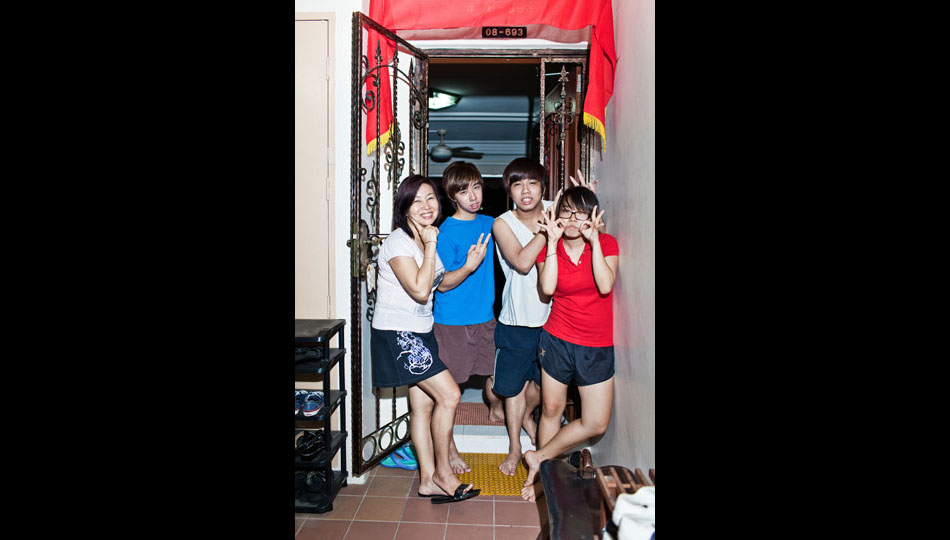

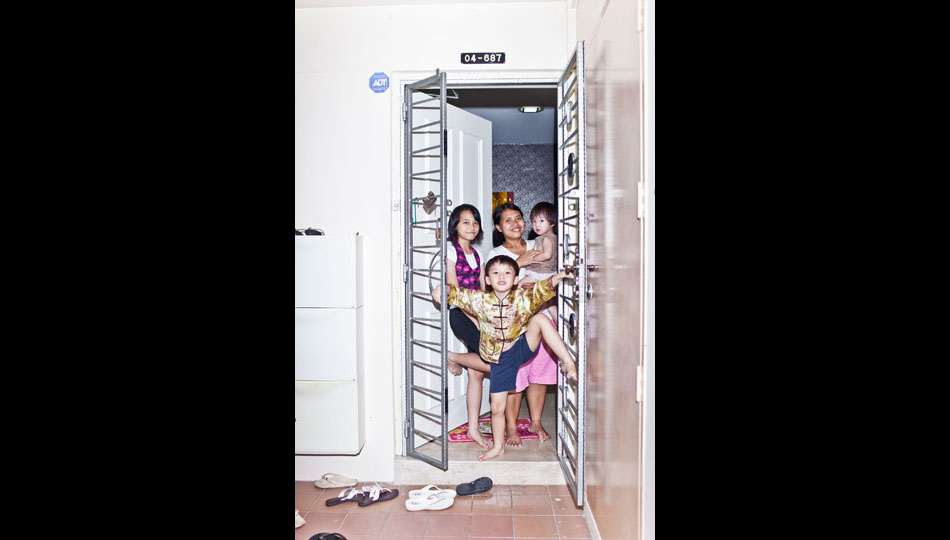

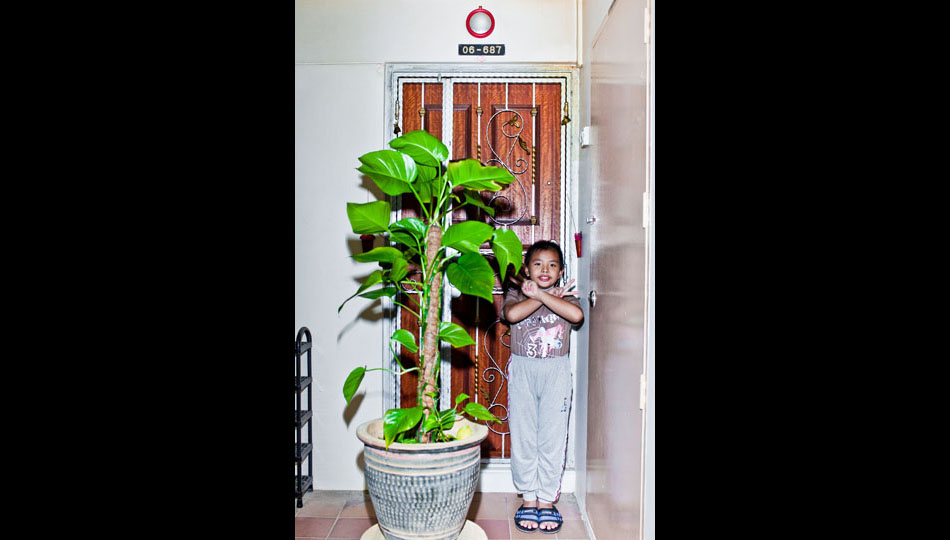
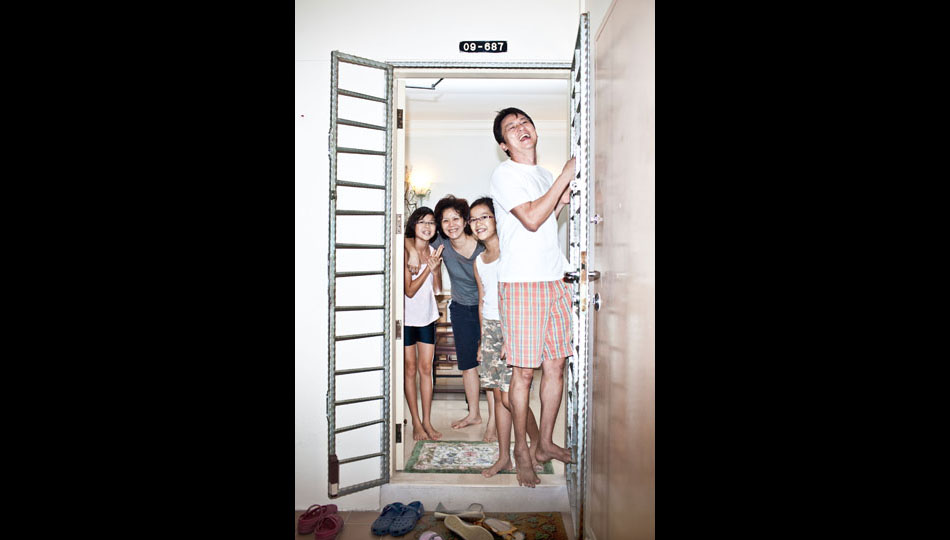
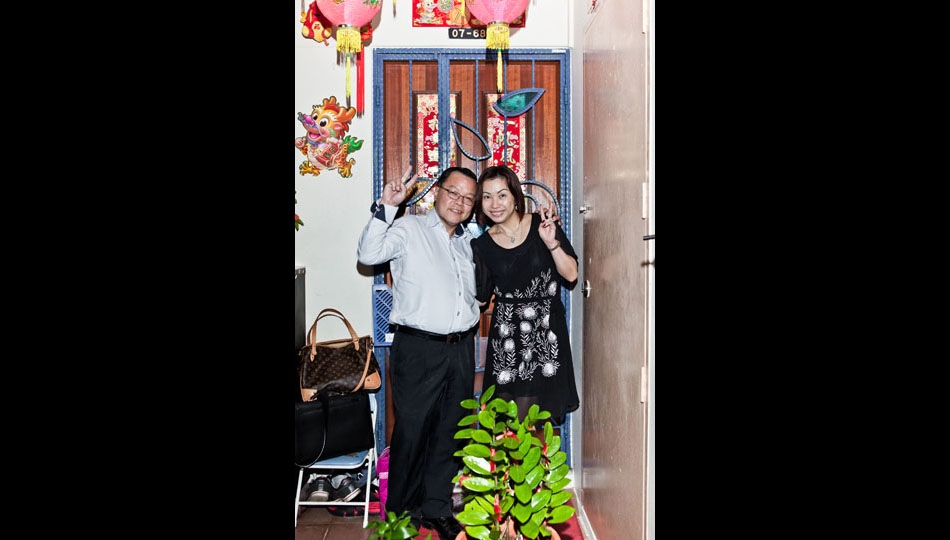
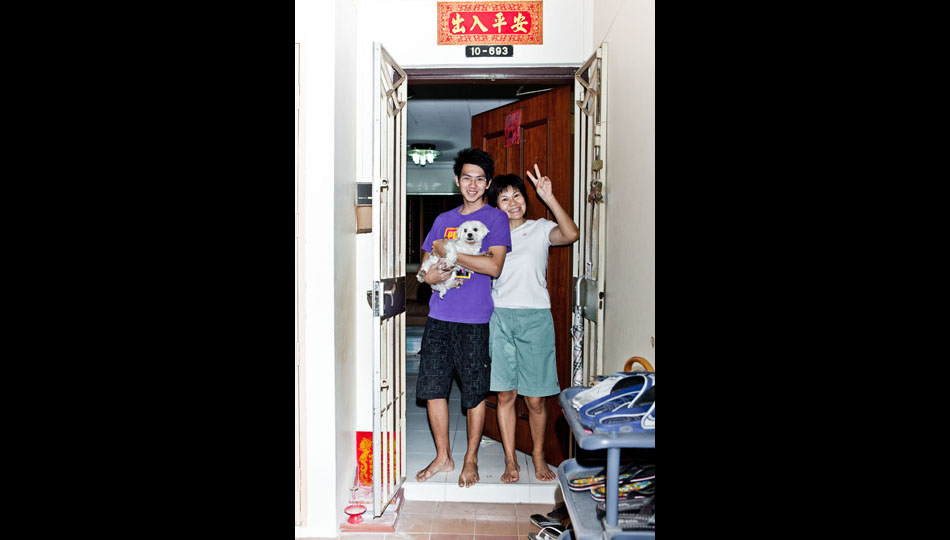
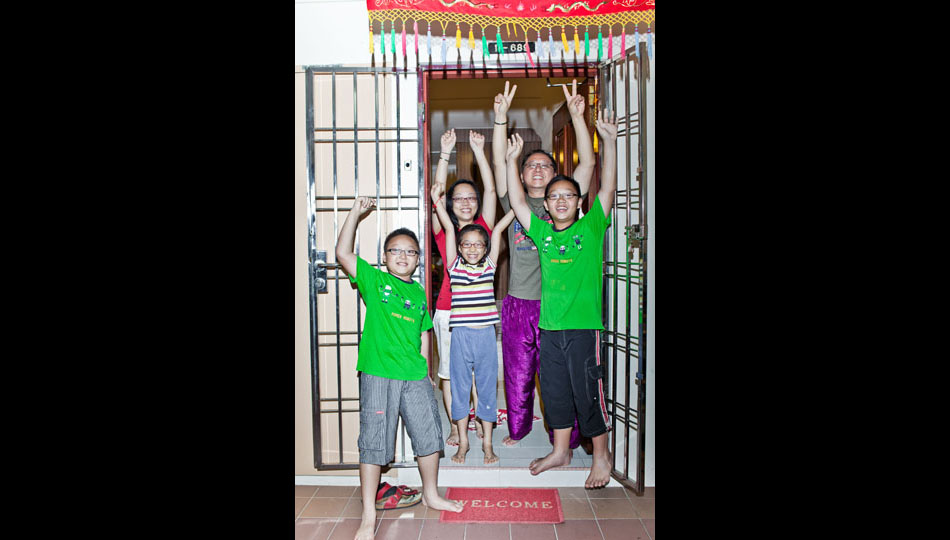
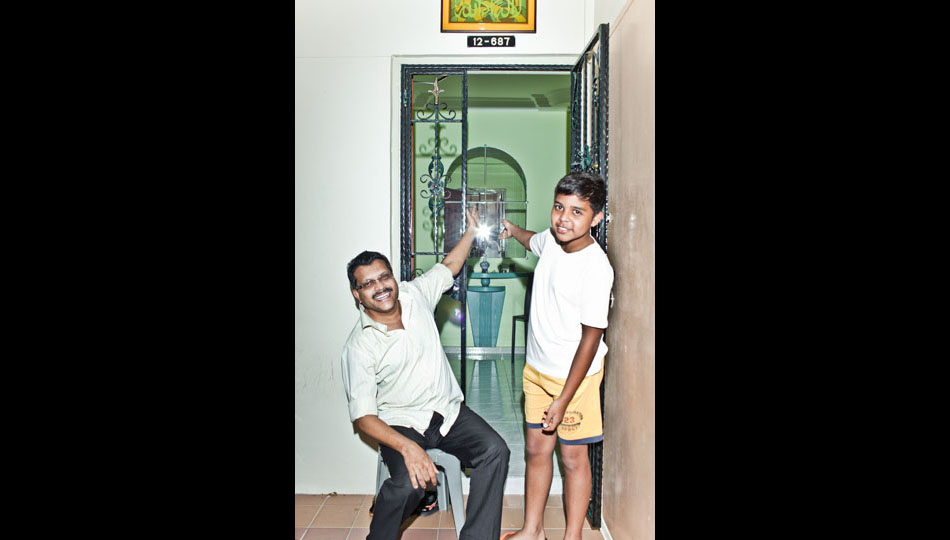
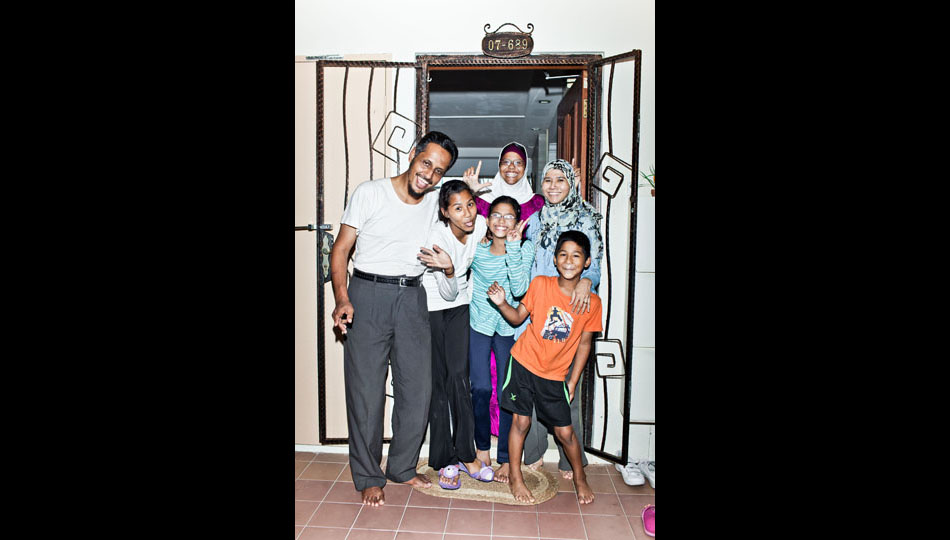
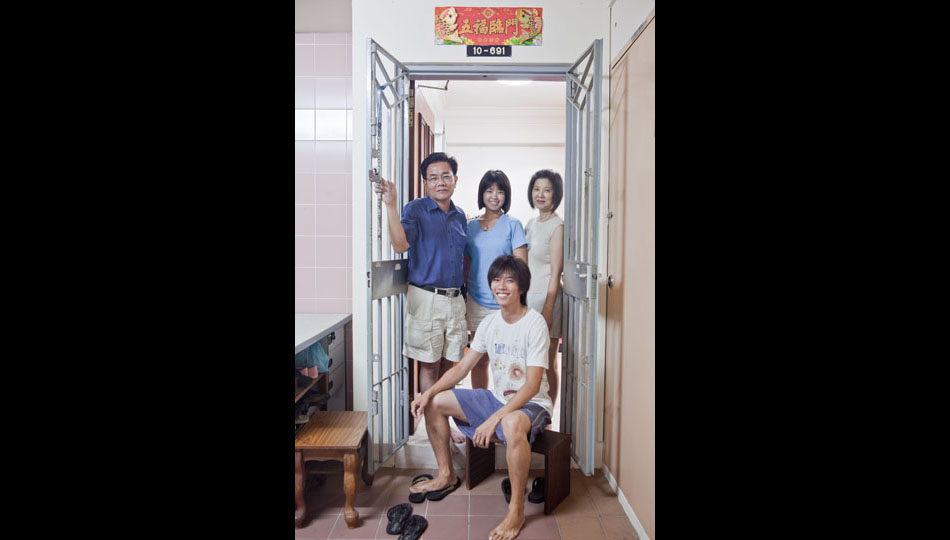












Photographer Sam Kang Li wanted to know his neighbours better and strengthen the community spirit in his HDB block. His creative effort took on a life of its own and was even mentioned in Prime Minister Lee Hsien Loong’s 2011 National Day Rally as an example of active citizenry. He shares the project with Be an Idea.
It's been awhile since you've wrapped up the "At Our Doorsteps" project with a block party and photo exhibition that was very well received. Looking back, what was the motivation behind the project?
I’ve always been trying to implement ideas that could use photography as a tool for projects in Singapore and this turned out to be a good match. It was a personal challenge to work on a local project, and I wanted to do something that was hyper-local. My block was the perfect place to start because the project would be more significant to me.
What were some of the challenges you faced in completing the project and how did you overcome them?
I thought about this project for three months before I started. The thing that bugged me a lot was the approach. It had to centre on my neighbours, but the question was how. It would be irresponsible to keep changing approaches and having to shoot my neighbours again just to fit my idea.
In the end, I decided to shoot them at their doorsteps in a very standardised and uniform aesthetic. I considered shooting inside their homes, but people might be less willing to let me do so. Also, the interiors of a home might invite judgement from other neighbours, whether it was neat, messy or lavishly decorated, so I decided to present each neighbour as equally as possible.
Even though photographs can connect a community, it can also disconnect. When I put a face to each household, it might invite bad things such as gossip as we now know that this is the neighbour whose dirty laundry is dripping on mine. Or there might be neighbours who don’t want to be recognised for valid reasons.
As I’ve seen all the neighbours I shot and have opened myself up to them, I also had to live up to being an approachable neighbour. So I now make an effort to spot my neighbours at the void deck and initiate conversations in the lift. The pictures have opened doors literally and metaphorically.
Your project has caught the attention of the government and Prime Minister Lee Hsien Loong spoke about it at last year’s National Day Rally. Have you thought of expanding it?
I have been asked to consider expanding this project to a national level, but my reply is always a cautious one. It would be more meaningful if individual photographers do it in their own community because I would just be entering and leaving — there will be no bedrock for the community. Also, the tricky thing is that its success has to be measured qualitatively. The end product is enhancement of community relations, and this can only be measured in two to three years time.
The only thing I can do is to photograph my block well and share the lessons learnt. Others can then take it up for their community. For instance, I’ve learnt it might not be such a wise idea to show my neighbours’ faces along with their unit numbers. That’s something future projects can consider.
Can you share some anecdotes of how "At Our Doorsteps" has inspired new connections or projects in Singapore?
I have been requested to give talks about this project at the Nanyang Academy of Fine Arts, Ngee Ann Polytechnic and Nanyang Junior College. Nanyang Junior College students will also be emulating this project for the Braddell neighborhood as part of their Community Leadership Programme. A short film called Homebound, based on this project, has also won the top prize at the Cine65 filmmaking competition organized by Nexus as part of their efforts to foster national identity. At my block, there is certainly more exchange of greetings and conversations whenever we see one another.
How do you feel about these positive responses and what lessons do you want people to take away?
I think it is very gratifying to see people reacting so positively to the project, so much so that it takes on a life on its own. These responses spur me on to continue move on to pursuing new projects, which say something about how I feel about being a Singaporean. My next project will draw on my experiences serving National Service.
I was surprised by the attention that this project has drawn and the positive response that followed. I think it reflects what people desire and experience in their own residential communities. The question for us is, beyond a project like mine, which is really just a form of trigger, is what more can be done to really build the community spirit? I think it is the small gestures that matter.
This article first appeared as part of the original Be An Idea content platform on social impact. While Be An Idea has evolved into something different, we still respect our roots in social impact and have archived this article under the category Be An Idea Magazine.
